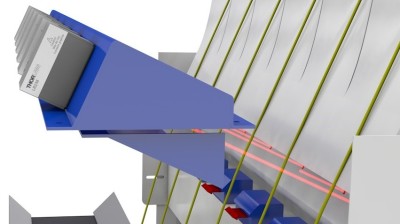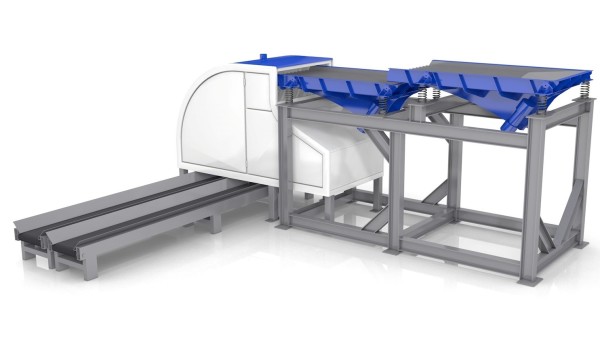
High End Laser Technology
LIBS Modern sensor-based sorting technologies offer much-enhanced sorting functionality, sorting wrought Al alloy scrap into different grades including 5xxx and 6xxx series alloys and removing unwanted product.

Laser induced breakdown spectroscopy (LIBS)
XRT Sensor-based, density sorting alone is not good enough for most aluminum recycling applications.
Chemistry is the key!
I. INNOVATION and AUSTIN AI
How LIBS works?

How LIBS works?
How LIBS works?
II. INNOVATION and AUSTIN AI
How LIBS work for you?
Schematic illustration of LIBS detection
III. INNOVATION and AUSTIN
How LIBS improve your bottom line ?
- Laser-induced breakdown spectroscopy (LIBS) is a type of atomic emission spectroscopy which uses a highly energetic laser pulse as the excitation source.
- The laser is focused to form a plasma, which atomizes and excites samples.
- In principle, LIBS can analyze any matter regardless of its physical state, be it solid, liquid or gas.
- Because all elements emit light of characteristic frequencies when excited to sufficiently high temperatures, LIBS can (in principle) detect all elements.
- If the constituents of a material to be analyzed are known, LIBS may be used to evaluate the relative abundance of each constituent element, or to monitor the presence of impurities.
- LIBS operates by focusing the laser onto a small area at the surface of the specimen; when the laser is discharged it ablates a very small amount of material, in the range of nanograms to picograms, which generates a plasma plume with temperatures in excess of 100,000 K.
- During data collection, typically after local thermodynamic equilibrium is established, plasma temperatures range from 5,000–20,000 K.
- At the high temperatures during the early plasma, the ablated material dissociates (breaks down) into excited ionic and atomic species.
- During this time, the plasma emits a continuum of radiation which does not contain any useful information about species presented, but within a very small timeframe the plasma expands at supersonic velocities and cools.
- At this point the characteristic atomic emission lines of the elements can be observed.
- The delay between the emission of continuum radiation and characteristic radiation is in the order of 10 μs, this is why it is necessary to temporally gate the detector.
- Scrap must be of appropriate quality before it can be melted down.
- To obtain this level of quality, all adherent materials must be removed.
- Depending on scrap type, aluminum losses of about 2% to10% may be incurred during separation of aluminum from other materials.
- A certain degree of material loss is inevitable with industrial processes but, because of aluminum’s high intrinsic value, all efforts are directed at minimizing losses.
- For example end-of-life products are often not mechanically separable into single material output fractions. A dilution of foreign materials within each output is the result.
- The treatment of scrap is a joint undertaking by the aluminum recycling industry and specialized scrap processors.
- Almost all aluminum used commercially contains one or more alloying elements to enhance its strength or other properties.
- Aluminum recycling therefore contributes to the sustainable use of copper, iron, magnesium, manganese, silicon, zinc and other elements.
- Implementing new technology in the form of LIBS and XRF sorting is maximizing recycling quantities accordingly and opens up up-to-date eco efficient process optimization
- Scrap must be of appropriate quality before it can be melted down.
- Why are single elements of interest important to the secondary smelter?
- In summary, the difference in one element’s presence or absence in furnace feedstock can dramatically affect the mill’s performance.
- For example, if the incoming feedstock is a Twitch-like material (a mix of wrought and cast scrap), then the furnace operator must either increase the amount of alloying Si if he is making a cast Al product; or he must dilute down the Si if he is making a wrought product.
- In the former case, the operator adds Si metal to the molten Al to get the Si up to spec. In the latter case, the operator adds pure Al ingot to reduce the Si to spec. In both cases these pot adjustments means there is...
1) significant added energy consumption
keeping the melt at temperature;
2) longer pot time (lower turnover); and,
3) added feed material costs.
- The argument becomes more dramatic when the case for Mg is analyzed.
- More and more Mg metal is finding its way into feedstock from today’s scrap shredder process. This is a result of increased usage in automobile manufacturing, mainly.
- Referring back to the Twitch product, Mg levels can be at 3%-5%, or more.
- For most secondaries there is a need to reduce this Mg content to lower values.
- This is typically done via the addition of chlorine to the molten metal and the subsequent creation of a floating Mg slag that is drawn off.
adjustment case, there are the incremental arguments
supporting removal/reduction of the Mg metal before
melting.
4) increased capacity per turnover;
5) reduction in chlorine usage;
6) reduction in the waste Mg slag; and
7) creation of an asset as the pre-extracted Mg
metal is a tradable commodity (typically trading
higher than the subject Al metal).
- These are seven powerful drivers providing quick ROI for those adding Mg extraction technology to tprocessing line.
- Finally, one can achieve “closing the loop” in aluminum recycling to the point of ultimate alloy specificity.
- As an example, alloys of the 5xxx and 6xxx series can be sorted (see inset).
- This is done with LIBS (Laser Induced Breakdown Spectroscopy).
- Several key applications are the sorting of Aluminum extruded parts (typically 6XXX series) and automotive recycling applications (where 5XXX series alloys are common).
- Latest XRF and LIBS sorting technologies are the final step to a cradle-to-cradle process, resulting in huge energy savings and highly profitable recycling operations.

Salient point 1) - 3)

Austin AI LIBS Machine
In addition to the salient point 1) - 3) above for the Si...

These are:

pdf LIBS Machine
Austin AI LIBS Machine
AUSTIN AI LIBS Sensor Sorters are:
Capable of processing up to 6 tons/hour, or more, depending on material density and piece size range.
Designed to be quickly field upgradable for increased capacity
Multi-Application Program Capable
AUSTIN AI builds to German Specifications but MADE in AMERICA